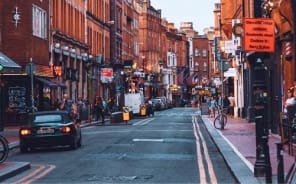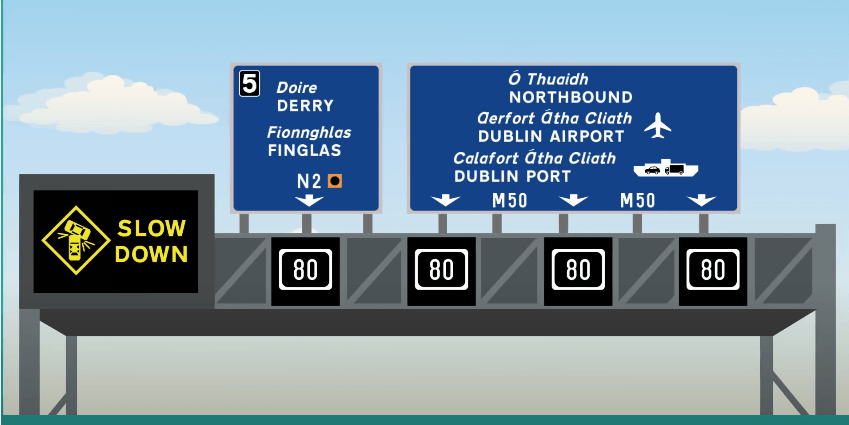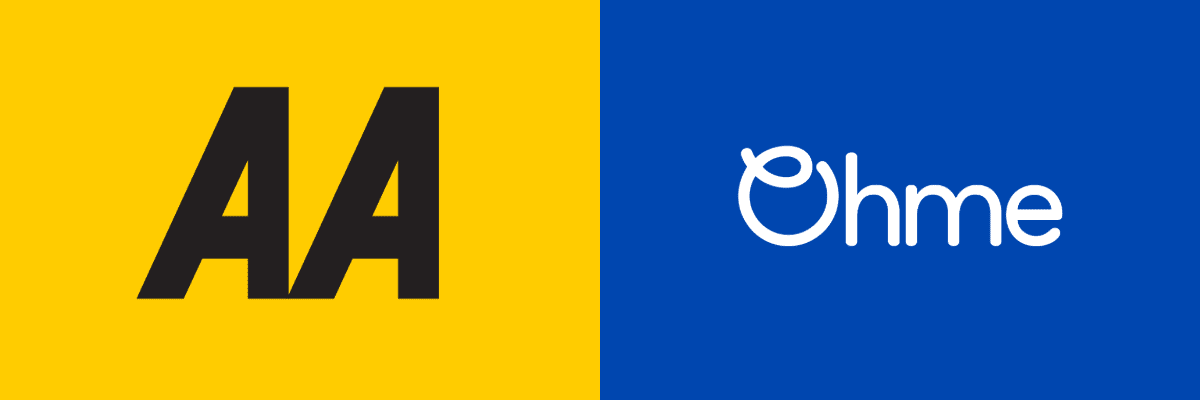Please note, as of ‘01/08/2023’, all variable speed limits are still applicable.
What’s changing on the M50? What does variable speed limits mean?
The M50’s new dynamic traffic management system is being rolled out from October 2021, as part of the (Enhancing Motorway Operation Services).
As a driver, the main thing you’ll see are a new set of overhead digital signs for variable speed limits – this means that operators can change the speed limit or manage lane closures.
The M50’s usual speed limit is 100km/h (and 120km/h south of J14 Sandyford). Under this new system, the speed limit can be temporarily reduced for specific stretches when the conditions require it. So, when there are adverse road conditions, like hail or heavy rain, the speed limit can be reduced to a lower one to slow traffic and reduce the risk of collisions. The limit can also be lowered when there is an incident ahead affecting traffic flow, or when the motorway is particularly congested.
The lower limit will apply until the signs show a return to 100km/h or 120km/h. When the digital signs are switched off, the normal limit applies.
Why will this reduced speed limit help traffic on the M50?
Traffic moves best when it flows at a steady speed, rather than speeding up whenever there is a gap and slowing down at congestion.
When something happens to slow traffic, whether an incident or a last-minute manoeuvre by a driver, it can lead to a “shockwave” of braking by all the traffic coming behind it. This causes congestion for far longer than the original incident caused, and can lead to further collisions as drivers hit the brakes. The idea of lowering the speed limit is to prevent this – if traffic is moving more slowly to begin with, there’s less of an impact on braking. The M50 had 1,200 incidents in 2019, 525 of which were collisions.
Worried about speed and keeping safe? Check out AA Car Insurance. Protecting what’s precious, you’re open to a host of benefits that are hard to find elsewhere.
Who controls the variable speed limits?
The speed limits will be controlled from motorway operations control centre with a new Intelligent Transport System. The control centre is based at the Port Tunnel on East Wall Rd, where operators monitor the M50 24/7 by CCTV.
For more information on the system and what the signs will look like, see this video from TII. If you have other questions about motorway driving, including the little “shape” signs on the M50, check out our Motorway FAQs.










